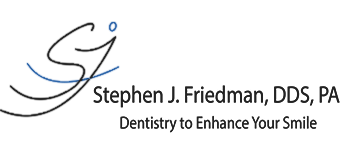Veneers
If you have gaps between your teeth, misshapen teeth, or stains on your teeth, you might think your only treatment option is smile design. However, dental veneers can address all of these problems, restoring your smile to its healthy, attractive near-original condition. At his self-titled practice in Silver Spring, Maryland, Stephen J. Friedman, DDS, PA, regularly prescribes dental veneers to address a variety of oral imperfections. Request your appointment today by calling the office or by clicking the online booking tool.
What are dental veneers?
Dental veneers are tooth-colored restorations that are custom-made tooth forms of porcelain, ceramo-resin, or composite resin that are bonded permanently to the teeth, usually the front teeth, to improve and idealize their esthetics. Usually, very little preparation of the underlying permanent tooth structure is necessary.
Veneers are usually planned and fabricated in the lab and are a very predictable method to improve the color and aesthetic appearance of the front teeth.
What types of issues can dental veneers address?
Dental veneers are versatile and capable of addressing a wide variety of cosmetic imperfections, including:
- Broken teeth
- Chipped teeth
- Gaps in teeth
- Smaller-than-average teeth
- Pointed teeth
- Discoloration that doesn’t respond to teeth-whitening procedures.
The application of dental veneers can make dynamic predictable modifications to your smile. This procedure can help you boost your esteem and self confidence when you smile resulting in more social and professional acceptance. First appearances do make a difference!
What is the process of receiving dental veneers?
The fabrication of dental veneers goes from the planning stage to the finished veneers. At the first appointment, a comprehensive oral exam is performed and study models are usually taken to evaluate and plan the procedure.
In addition to the exam, a review of medical history and the patient’s goals for treatment are completed. Once the patient’s status, conditions, and goals are reviewed, and a clear objective is determined, a treatment plan can be proposed, financial arrangements can be made, and treatment can proceed.
Tooth preparation, impression and bite, and temporization is done after the comprehensive exam appointment, or at the second appointment. The tooth preparation can usually be done with minimal preparation for the teeth to be veneered.
When comfort is a concern, oral anesthetic is administered. Then the teeth are prepared by removing a minimal amount of tooth structure to allow well-contoured veneers to be made and bonded to the teeth.
Next, an impression is taken and temporaries are made. These temporary model the final restorations and protect the natural teeth until veneer fabrication by the lab is complete. The patient then wears the temps for 1-3 weeks while the veneers are being fabricated at the dental lab.
When they are ready, the patient presents at the third and final appointment known as the delivery appointment. A local anesthetic is once again administered, the temporaries are removed, and the new veneers are tried in. Once approved by the patient, they are bonded into place and given final bite adjustments and polished to comfort and function.
How do I care for my dental veneers?
Patients are instructed to care for their dental veneers using the same personal oral hygiene care as they use caring for their own natural, permanent teeth. Brush and floss them regularly, maintain preventive dental health care every six months or sooner for a professional cleaning and exam, and avoid bad habits such as nail-biting or ice chewing.
By following these guidelines, dental veneers are considered permanent restorations that have a life expectancy of 10 plus years.
Don’t let discolored or damaged teeth prevent you from smiling confidently. To learn more about dental veneers, make an appointment at Stephen J. Friedman, DDS, PA, by calling the office or clicking the online booking tool today.


